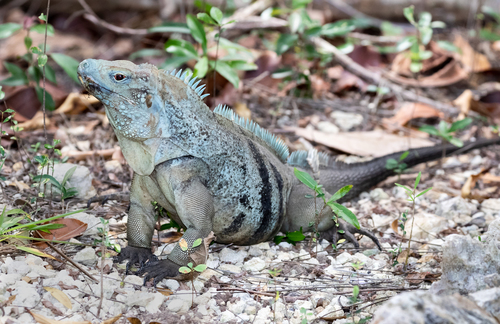
Blue Iguana
The Grand Cayman Blue Iguana (Cyclura lewisi) dazzles with its vivid blue hue. Endemic to Grand Cayman, this herbivorous reptile thrives in sunlit rocky habitats, aiding seed dispersal. Its striking appearance and vital ecological role make it a captivating species in its natural paradise.
Endangered
Conservation Status
Increasing
Population Trend
Characteristics
Cyclura lewisi, known as the Grand Cayman Blue Iguana, is a large lizard endemic to Grand Cayman. It is renowned for its striking blue coloration, especially during the breeding season. These iguanas inhabit rocky, sunlit areas and are primarily herbivorous, playing a crucial role in seed dispersal within their ecosystem.
Distribution Range of the Blue Iguana
Cyclura lewisi, commonly known as the Grand Cayman blue iguana, is native to Grand Cayman, the largest of the Cayman Islands, located in the Caribbean Sea.
Blue Iguana's Habitat
Environmental Conditions
The Grand Cayman blue iguana primarily inhabits dry, rocky forests and shrublands characterized by open, sunny areas that are crucial for basking. The region experiences a tropical climate with a distinct dry season and a wet season, with temperatures typically ranging from 24°C to 30°C (75°F to 86°F).
Ecological Niche
As a terrestrial herbivore, Cyclura lewisi plays a vital role in its ecosystem by aiding in seed dispersal through its diet, which consists mainly of leaves, flowers, and fruits. The species is adapted to the karst landscape of Grand Cayman, which provides ample crevices and shelters for protection against predators and extreme weather conditions.
Copyright @ Nature Style Limited. All Rights Reserved.
 English
English